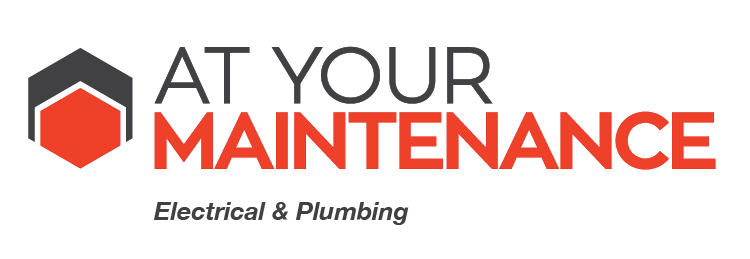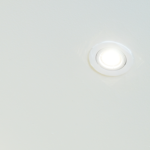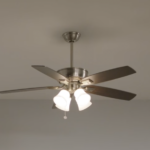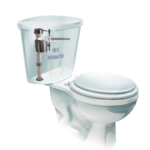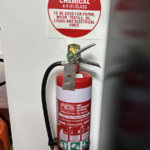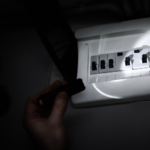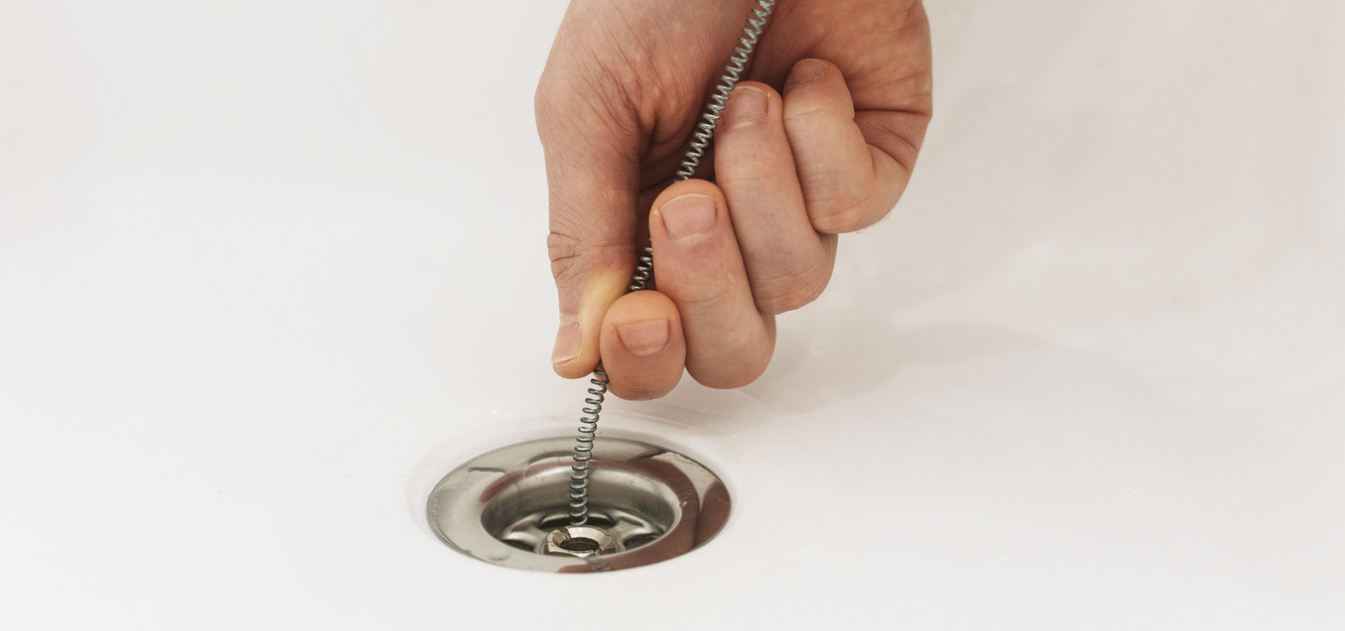
After a long day at work, the one thing everyone looks forward to is a warm, relaxing shower. As you’re waiting for the water to reach the perfect temperature you suddenly notice that you are standing in a pool of built-up water. Your relaxing shower experience has now turned into a stressful flood with only your drain to blame.
We’ve all been there but rest assured, there are some simple and convenient ways to fix and prevent a clogged shower drain so that you can get back to enjoying your showers!
Types of Shower Drains
Linear Drains
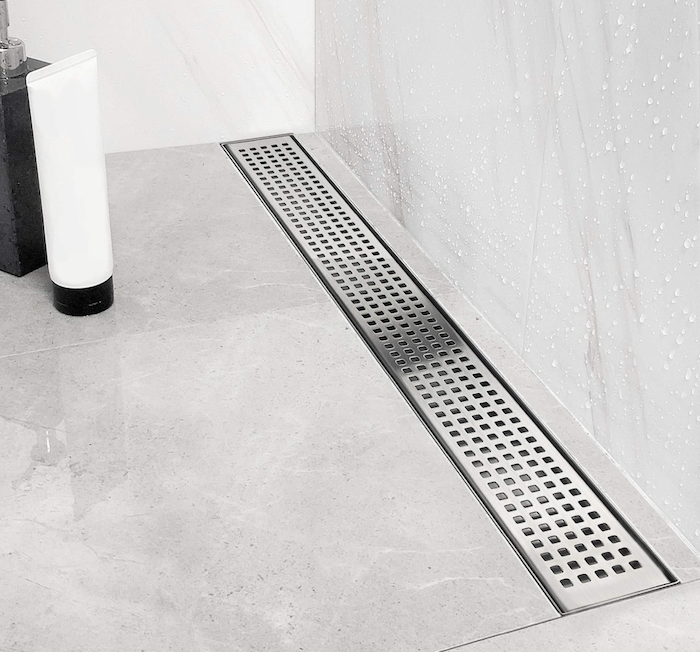
Linear drains, also referred to as channel drains, shower grates, line drains, trench drains, slot drains or strip drains, are the long and narrow steel channels fitted between shower walls. These drains are often the option of choice in new homes and renovated bathrooms due to their modern design and ability to remove greater volumes of water.
What allows this drain to void more water is not only its increased surface area but also the gentle gradient that the shower floor is built on which allows the flowing water to travel gently and evenly towards the drain.
Point Drains
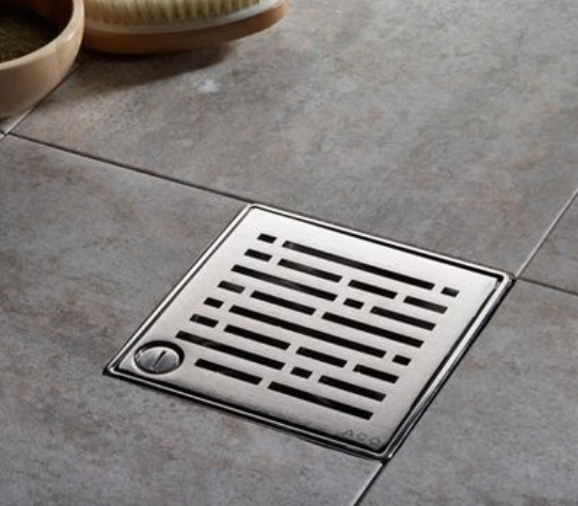
Point drains, also referred to as centre drains or pivot drains, are the geometric-shaped drains often located in the middle or corner of the shower floor.
They are a popular drainage option in many homes, particularly those made during older construction, due to their easy-to-clean and space-saving design. Point drains are less expensive than other drainage options and have fast drainage, however, they can cause drainage problems due to their reduced surface area for water to be voided from.
Why do Shower Drains Get Clogged
Flow Rate
Flow rate refers to the water pressure that is expelled from your shower head when it is turned on and running. Whilst a gentle stream is unlikely to cause any drainage issues, if you are someone who prefers higher water pressures then you may be faced with an unwanted pooling of water during your showers. This is most commonly a problem for people with single point drains as these are unable to clear as much water as a linear drain which can void between 15-60 litres of water per minute, allowing it to comfortably cope with a heavier flow.
Clogging

Clogging is another common drainage problem that can occur within both point drains and linear drains. Unlike a clogged toilet or kitchen sink which commonly become blocked due to larger obstructions, shower drainage generally slows due to a gradual accumulation of soap, hair and debris which eventually clog the pipes.
How to Prevent Your Shower Drain from clogging
Drain Maintenance
Incorporating a thorough shower and drain clean into your usual, regular cleaning routine will help to avoid a build up of any potential blockages. Simply keep a bottle of natural drain cleaner in the bathroom and pour some of it down the drain following every few showers.
Avoid Body Scrubs
Although body scrubs may make your skin feel beautifully soft and smooth, as the oils venture down the drain they actually begin to harden as the pipes cool. With continual, repeated use, the products will eventually accumulate and clog your drain.
Use a Drain Cover
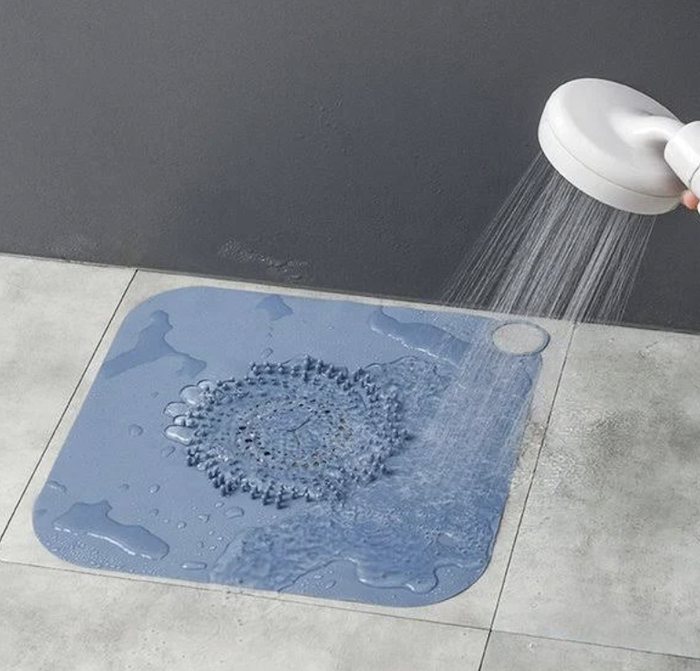
A basic drain cover is a simple and effective way to catch any hair that would usually end up being washed down the drain. As the caught hair begins to accumulate, you can simply remove the cover to empty and clean it before replacing it back over the drain.
Ways To Unclog Your Shower Drain
Check for Blockages and Unclog by Hand
The first thing you should do to unclog your shower drain is to check for any visible and easily accessible obstructions. Clumps of hair are a common culprit which can be quickly removed by putting on some gloves and pulling it out by hand.
Alternatively, you can purchase small plastic hooks designed especially for this purpose. It might also be useful to clean the external aspect of your drain from any built-up soap by scrubbing it with a brush and some warm water.
Try a Drain Snake
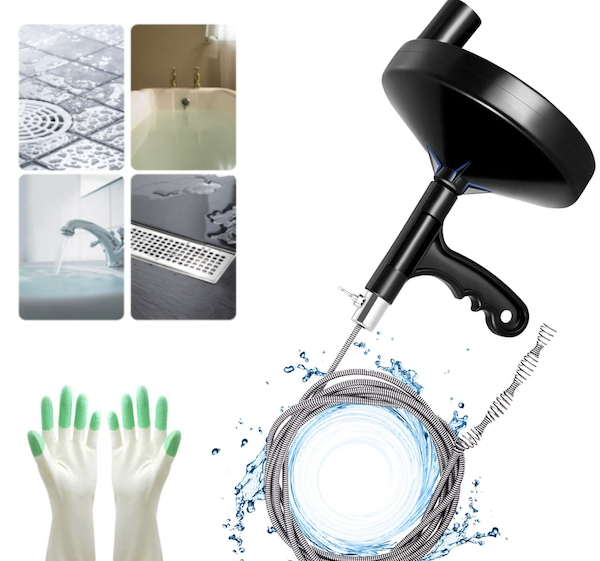
A drain snake, also referred to as a plumber’s snake, is a slender, flexible drill bit used to remove clogs and blockages in drains. To use it, you will lower a metal cable down the drain with the purpose of either breaking up or pulling out whatever is causing the blockage.
In Melbourne, you can hire a drain snake from Kennards Hire, Better Rentals or Carnegie Smart Hire to name a few.
Boiling Water
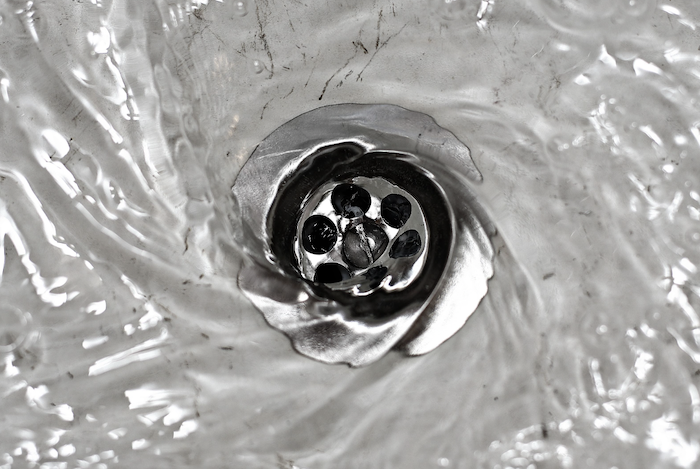
If you are unable to visualise the obstruction and a drain snake has been unsuccessful, pouring a pot of boiling water down the drain may be the next suitable option. Boiling water can dissolve softer obstructions such as built-up soap scum that may have accumulated around the edges of the pipes. This process should be repeated two or three times to ensure all aspects of the drain have come in contact with the hot water.
Natural Drain cleaner
Natural drain cleaners are a popular, simple, and effective way to unclog your drain. Formulations can be made at home using staple household ingredients which reduce your exposure to harmful chemicals and usually work just as well, if not better, than purchased chemical cleaners. 2 natural recipes include:
Baking Soda and Vinegar
1. Pour boiling water down the drain to loosen any debris
2. Combine 1 cup of baking soda with 1 cup of distilled white vinegar and pour the mixture down the drain
3. Allow this to sit for between 15 mins – 1 hour
4. Pour another pot of boiling water down the drain
5. Repeat if necessary
Baking Soda and Lemon juice
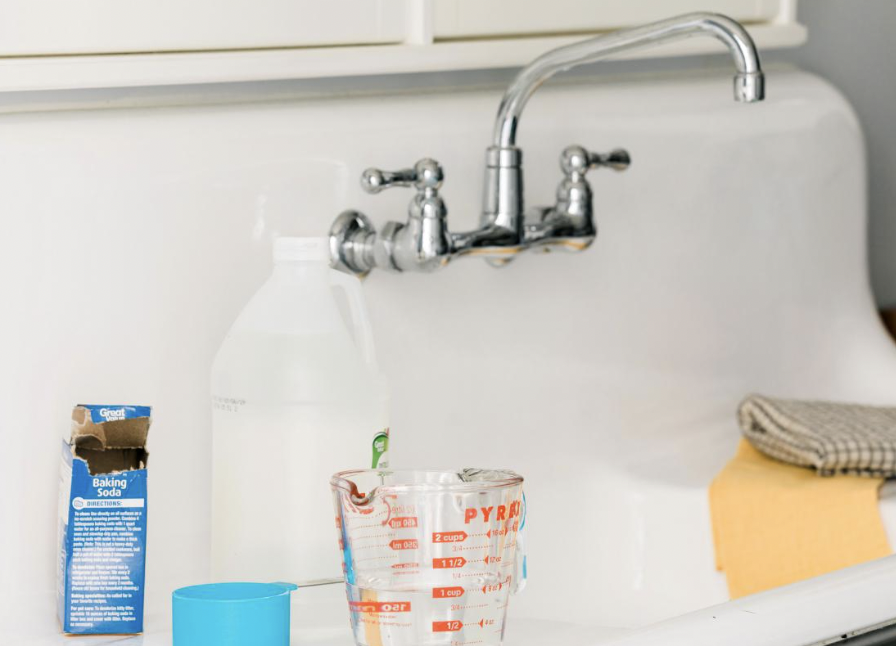
1. Pour boiling water down the drain to loosen any debris
2. Combine 1 cup of baking soda with 1 cup of lemon juice and pour the mixture down the drain
3. Allow this to sit for between 15 mins – 1 hour
4. Pour another pot of boiling water down the drain
5. Repeat if necessary
Chemical Drain Cleaner
Another option includes chemical drain cleaners which you can purchase at any hardware or cleaning stores. When using these products, it is important that you do so properly as incorrect use can cause damage to your shower as well as harm to yourself.
Before you begin to use, ensure to read and abide by the safety instructions on the bottle. It is a good idea to apply some personal protective equipment such as gloves, goggles, and a mask to minimise chemical exposure.
The process of using chemical cleaners involves pouring the specified amount of cleaner down the drain, allowing it to sit and then rinsing the drain with hot water. Some common chemical drain cleaners include:
• ‘Drain Clean’ products such as hair unclogger, one drain crystals or enzyme cleaner
• ‘Glitz’ drain cleaners and deodoriser foam
• ‘Green Care’ drain cleaner
Clogged Shower Drain FAQs
Does a plunger help unclog a shower drain?
If you are unable to manually extract the blockage and drain cleaners are proving unsuccessful, then a plunger may just save the day. By forcing pressurised water in both directions, the plunger should loosen the obstruction and unclog your shower. To implement this technique, firstly ensure that you are using a shower plunger and not a toilet plunger.
A shower plunger has a shallow red rubber cup and a shorter handle. Place the plunger over the drain and push down once to release any air trapped under the cup. Fill the shower with at least an inch of standing water and continue to pump the plunger 15-20 times before removing it from the drain.
If successful, you will notice the standing water draining away quickly. If the water does not drain, repeat this process.
Can plunging make a clog worse?
Whilst using a plunger to unclog your drain can be successful, it can also make the problem worse. The aim of a plunger is to push the clog through the pipes and clear them this way. If the obstruction dislodges and moves smoothly through the piping, then the plunger will clear your clogged drain. Alternatively, however, the plunger can also push the material even deeper into your plumbing system, essentially making the problem worse and more difficult to fix.
What can dissolve hair in a drain?
The best way to remove hair from your drain is to use the methods outlined above. Physically pulling out the accumulation of hair should be your first point of call.
If you are unable to do this, both natural and chemical drain cleaners should dissolve or at least dislodge any clogged-up hair.
How do you unclog a shower drain with water in it?
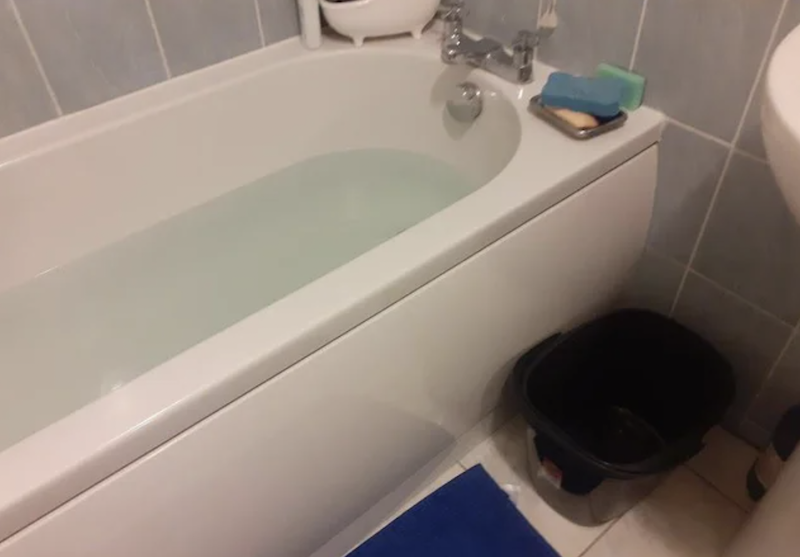
If you are needing to unclog a shower that currently has standing water in it, you will need to begin by removing the water. To do so, apply gloves and use a scoop and bucket to remove all water from the shower and empty outside.
Remove any drain covers and use a dry towel to absorb excess water around the drain. Clean off any visible grime from the drain and then continue by attempting the clog clearing methods outlined above.
*********
A clogged shower is an inconvenience that no one wants to deal with. By implementing the preventative strategies and understanding these simple methods to unclog your shower, you can confidently return home from work for your relaxing shower without the worry of finding yourself standing in ankle deep water.
Need professional help, and you are in Melbourne, Australia – give At Your Maintenance a call.
Did you like this info about cleaning? Then be sure to check out our latest article on cleaning with baking soda.
Written by At Your Maintenance, your local plumbers and electricians who install and repair ovens.

